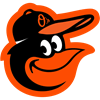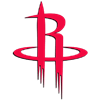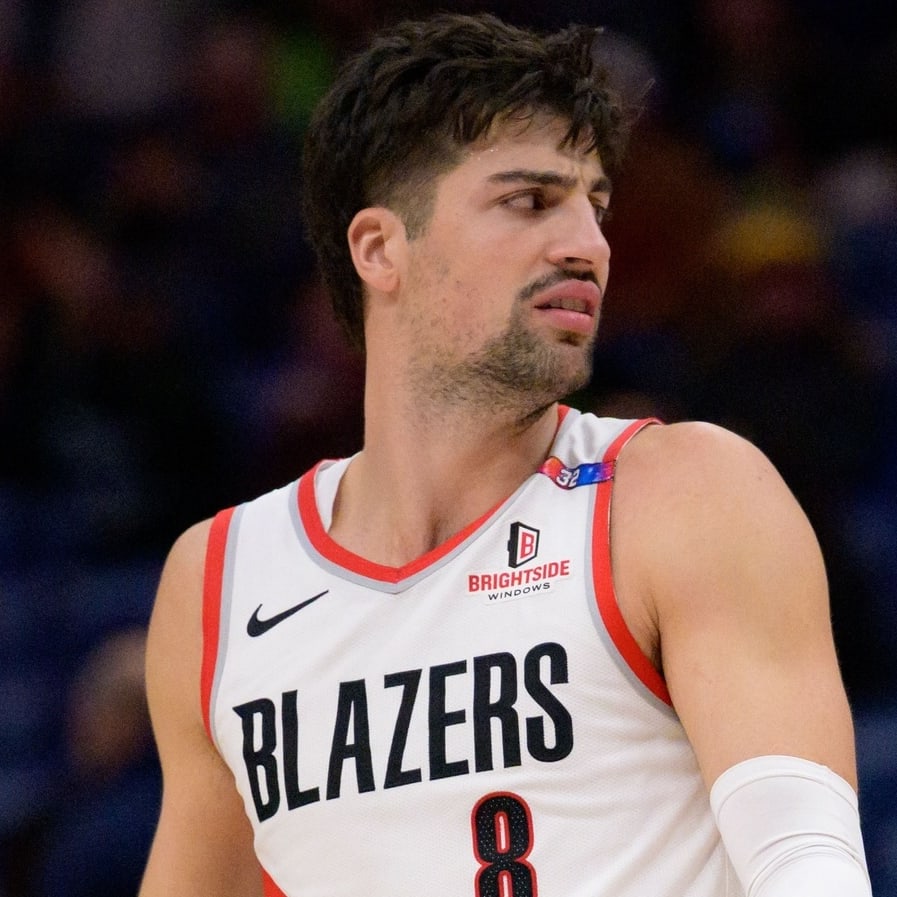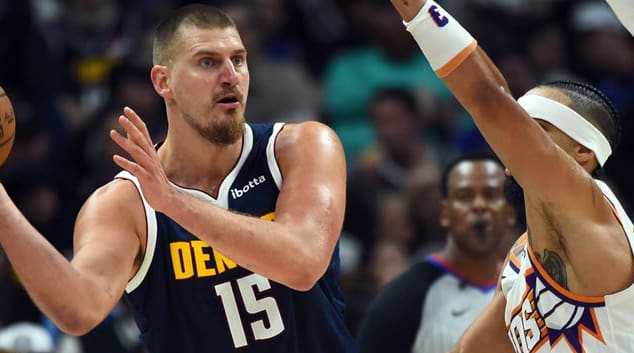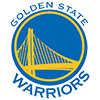 STATE OF THE FRANCHISE
STATE OF THE FRANCHISE
The Warriors are in an interesting place. A playoff team each of the past two seasons and seemingly on the verge of going deeper into the postseason tournament, they fired head coach Mark Jackson at the end of the season. He led them to a 51-win record and a sixth-seed in the difficult Western Conference, but two assistant coaches departed abruptly just before the playoffs with one fired after secretly recording team-oriented conversations. There was some dysfunction in the front office, and a rift between the brash Jackson and ownership led to the coach's termination.
In comes Steve Kerr, their second consecutive hire with no head coaching experience. He inherits a strong starting five and is expected to take the team higher in the Western Conference. Kerr will make some alterations to the offensive attack. He's a big fan of ball movement from side to side and maximizing the number of passes per possession, instead of a reliance on the isolation offense that the Warriors fell into last season. He doesn't have time on his side. The ownership group is antsy and expects improvement immediately in a deep Western Conference. Kerr's redesign of the offense needs to produce results fast.
The main offseason additions start with Shaun Livingston, who will back up both guard spots once he's healthy. They also added Brandon Rush and Leandro Barbosa. You'll notice they're all guards or swing men. There wasn't a significant big added. They flirted with Kevin Love, but many in the front office refused to part with Klay Thompson, and Jermaine O'Neal has ruled out coming back. Other than the frontcourt, the bench has improved. Kerr's biggest challenges will be taking Harrison Barnes to the next level, finding a competent backup big, and getting improved scoring off the bench.
PLAYING TIME DISTRIBUTION
The Warriors have relied heavily on the starting five the last few seasons, but new head coach Steve Kerr may reduce the starters' workload by developing a stronger bench. In the case of David Lee, it's necessary. The power forward has had a string of injuries in the last 18 months. Andre Iguodala and Andrew Bogut are also at the stage where big minutes are behind them. The addition of free agent Shaun Livingston, who, once healthy, gives them a reliable backup who will swing between both guard spots. For the Warriors, it all starts in the backcourt. Stephen Curry and Klay Thompson should each get about 33-35 minutes a night, with Livingston backing up each spot. Iguodala will start at small forward, play some point forward and shooting guard, and share minutes with Barnes. Entering his third season, Barnes was expected to be more than a backup, but he hasn't developed as planned. He could find himself playing the four in small lineups. Figure between 25 and 30 minutes for him. Rush returns to Golden State and should be a three-point specialist. Those kind of guys can play anywhere from eight to 15 minutes per night. Lee and Bogut will start in the frontcourt. Lee played his fewest minutes per game last season (33 mpg) and is coming off a second hip injury in as many years. In theory, Marreese Speights could get some backup run, but look for Kerr to use Draymond Green a lot at the four. He'll be in the 20-25 minute range. Bogut has averaged 25 minutes the past two seasons and missed a ton of games. It'll be a rare night when he plays 30. The spin coming out of training camp is that Festus Ezeli will be the primary backup, but it's more likely Kerr goes small with Lee at center to get minutes for Barnes and Green. Finding backup minutes in the backcourt for all the guys who can play there will be difficult, but there's ample playing time in the frontcourt.
PLAYER OUTLOOKS
Centers
Andrew Bogut: Bogut played 67 games last season, his most since 2009-10. He averaged 7.3 points, 10.0 rebounds, 1.7 assists, 0.7 steals, and 1.8 blocks in 26 minutes per game. The minutes were subdued partially due to an ankle injury that robbed Bogut of much of his previous season, but also by design. Under former head coach Mark Jackson, the Warriors often rolled with a smaller lineup featuring David Lee at center. That might change a bit under new head coach Steve Kerr, but given his recent injury history, protecting Bogut for the long haul is the prudent move. With Golden State, Bogut has not been the prolific offensive center he once was during his Milwaukee years. He has a nice offensive game, but there are just too many scoring options on the Warriors, reducing his touches and attempts. The 5.6 shot attempts per game he averaged last season was a career low. On this team, the 29-year-old center is looked to for his defensive contributions – blocks and rebounds. Bogut possesses good hands and a deft passing instinct for a big man. To that end, Kerr has sketched out some of his plans for the offense this coming season, including using Bogut more as a facilitator. The big question entering 2014-15 is health. Late in the regular season, he sustained a rib injury and missed the playoffs. Good health has been a scarce commodity for Bogut, who has missed double-digit games in seven of his nine NBA seasons.
Festus Ezeli: Ezeli missed the entire 2013-14 season after undergoing surgery to repair the medial collateral and posterior cruciate ligaments in his right knee back in June 2013. The Warriors' initial timetable had him returning last season, but he kept getting pushed back and never made it to the court. He was medically cleared to play this summer but suffered inflammation in his right shin and didn't see action at the Las Vegas Summer League. The injury was not considered serious, and we expect Ezeli in camp to compete for a depth role at center. He's an outstanding shot blocker, but work remains to refine his overall game. After missing a year of development time due to the knee injury, it would not be surprising to see Ezeli get a lot of D-League minutes this season.
Ognjen Kuzmic: Kuzmic, a second-round draft pick by Golden State in 2012, bought himself out of a European contract to come stateside for the 2013-14 season. A knee injury to Festus Ezeli opened an opportunity for the Serbian center, but he saw limited action on the third string behind Andrew Bogut and Jermaine O'Neal. Kuzmic then suffered a November hand injury that cost him six weeks. He spent much of the season honing his skills for the Warriors' affiliate in the D-League. Kuzmic clearly needs to work on offense, with rebounding and shot-blocking his present strengths. After playing four games in the Las Vegas Summer League, Kuzmic suffered a stress reaction in his left leg. The Warriors expect him to be fully recovered by early September and ready for the beginning of training camp. Beyond that expectation, there isn't much. There's no clear backup center on the roster going into camp, but it's hard to see a team like Golden State with postseason aspirations handing over a prime rotation spot to an untested Kuzmic. He'll be battling with Festus Ezeli, but when push comes to shove, we'd expect head coach Steve Kerr to use David Lee behind Bogut first before turning to either of Kuzmic or Ezeli.
Forwards
David Lee: Lee suffered through several nagging injuries and was limited to 67 games last season, the first time in seven seasons he's missed double-digit games. He's been healthy throughout his career, averaging 37 minutes per game the previous four seasons, but last year's injury-pocked season comes after he suffered a hip injury just before the 2013 playoffs. Entering his age-31 season, it's reasonable to question Lee's health. What we can't question is his effort or his production. The former Florida Gator averaged 18.2 points on 52-percent shooting with 9.3 rebounds, 2.1 assists, 0.7 steals and 0.4 blocks in 33 minutes per game last season. He's had better rebounding seasons, but the presence of a healthy Andrew Bogut frees up Lee to impact games in other ways. Such as scoring. Lee can score a variety of ways inside and has a pick-and-pop jumper. He gets ridiculed for his defensive inadequacies, but that doesn't stop the Warriors from trotting him out every night. The team wants to keep him to a sustainable 32-34 minutes per night, as was the case last season, but the they don't have a quality backup. Marreese Speights was supposed to be that last year, but he showed up in poor condition and never earned the coach's confidence. New head coach Steve Kerr will try out Draymond Green and Harrison Barnes in certain small lineup combinations, but most of the power forward minutes belong to Lee.
Andre Iguodala: Iguodala's first season in the Bay Area was a mixed bag. He provided the Warriors with a defensive mentality, being named to the NBA's All-Defensive First Team. Iguodala also served as an offensive facilitator and an added ball handler, but he was limited to 63 games and scored the fewest points of his career. He also took fewer shots per game (7.3), the lowest mark since his rookie season. But we expected a scoring drop-off when he signed with the Warriors, a team with multiple scoring options. His primary job was to be a lineup bonding agent, and in that respect, his year was a success. Iguodala averaged 9.3 points, 4.7 rebounds, 4.2 assists, 1.5 steals, and 0.3 blocks in 32 minutes per game. He also reversed the decline in his free-throw shooting, improving from 57 percent the year before to 65 percent. Iggy attempted just 2.1 free-throws per game, the fewest in his career, indicating that he didn't have the ball in his hands as often as he was used to when he was with Philadelphia. Aside from the scoring, his 2013-14 per-game production was in line with his career averages. But injuries limited his playing time and made him ineffective for stretches while playing hurt. New head coach Steve Kerr has talked about using multiple options as his starting small forward, mentioning Harrison Barnes and Draymond Green as possible replacements, but Iguodala's defense is too important to leave on the bench against opponents' best scorers.
Harrison Barnes: Barnes had a disappointing sophomore season, failing to make a developmental leap generally seen in high draft picks between seasons one and two. In 78 games, he averaged 9.5 points on 40-percent shooting with 4.0 rebounds, 1.5 assists, 0.8 steals, and 0.3 blocks in 28 minutes per game. After the All-Star break, he shot just 36 percent from the field and 26 percent from three-point distance. The Warriors envisioned the athletic wing becoming the team's premier scorer off the bench, but Barnes never delivered in that role. He's often deferential on the court, passing up shots or not driving to the basket enough. It might be a confidence issue. It would help if Barnes can develop a better handle. That might give him the confidence to take the ball to the hole more willingly. New head coach Steve Kerr believes Barnes can thrive with better spacing. Barnes will be project number one for assistant coach Alvin Gentry, known primarily for his offensive mind. So, while Barnes' regression from year one to two is off-putting, the change that comes with new voices calling the shots creates hope that Barnes can develop consistency, confidence, and a drive to get better. Look for him to play primarily off the bench, backing up Andre Iguodala at small forward.
Draymond Green: Green made great strides between his first and second NBA seasons. Known as a multi-purpose gadget in the Warriors' toolbox – he plays two positions, defends three, and has a basketball IQ off the charts – Green showed an improved shooting touch in 2013-14 and earned himself nine more minutes per game. As a rookie, Green bricked his way to 33-percent field-goal shooting and just 21 percent from three-point range. In his sophomore season, Green improved in those categories to 41 and 33 percent, respectively. His improvements as a shooter allowed former head coach Mark Jackson to give Green more playing time, which meant he could use a variety of skills to impact games. Green rebounds, defends, blocks shots, and moves the ball well. Above all, he plays with confidence. In 82 games, Green averaged 6.2 points, 5.0 rebounds, 1.9 assists, 1.2 steals, and 0.9 blocks in 22 minutes per game. With the Warriors a little thin in the frontcourt, Green should get minutes at power forward, and he'll be a staple in the lineup when new head coach Steve Kerr wants to go small.
Marreese Speights: Speights was signed to a three-year deal prior to last season to be the Carl Landry replacement, a competent backup at power forward/center with little drop off when starters get a breather. The design was for Speights to play 20-25 minutes per game. Unfortunately for Golden State, he was not in the best condition when he arrived at camp, and that extended into the regular season, shooting just 32 percent after the first quarter of the season and never becoming a reliable fill-in. In 79 games, he averaged 6.4 points, 3.7 rebounds, 0.4 assists, 0.1 steals, and 0.4 blocks in 12 minutes per game. It wasn't entirely bad for Speights. He shot a career-high 82 percent from the free-throw line. His shot eventually came around, but Speights was not trusted on a team screaming for help in the frontcourt. He reportedly dedicated himself to getting in better shape for the upcoming season, but he recently made headlines for getting charged with driving under the influence. With the Warriors looking to get more minutes for Draymond Green, a wing player that can defend the four, it appears Speights' role will not be a growing one this season.
Guards
Stephen Curry: Curry avoided significant injury for the second straight season in 2013-14, playing 78 games for the second consecutive season. Concerns about his wobbly ankles are slowly fading. He averaged a team-high 24.0 points on 47-percent shooting with 4.3 rebounds, 8.5 assists, 1.6 steals, and 0.2 blocks in 37 minutes per game. Curry also led the league in three-pointers made for a second straight season with 261. Not only is he one of the better field-goal shooters in the league, Curry is an excellent free-throw shooter. He made 89 percent of his freebies last season, and he's getting to the line more often, averaging a career-high 4.5 free-throw attempts per game. Curry can score from anywhere. Turnovers can be a problem, but he has improved his point-guard skills from when he first entered the league. Curry continues to hone his court vision, making those around him a little bit better. The 8.5 apg last year were good for sixth in the NBA. Heading into the new season, the Warriors added a competent backup point guard in Shaun Livingston, and we could see Curry playing a few minutes less per game at point guard, but he should continue to lead the Dubs in assists. A new head coach means some tweaks to the game plan, but Steve Kerr is a smart enough guy to leave Curry alone. Perhaps Kerr will give him some guidance in the finer points of point-guard play, but nothing needs to be done in terms of Curry's scoring or shot selection.
Klay Thompson: Thompson remains a Warrior after speculation that he might be part of a deal to land Kevin Love, but the Thompson lovers in the front office won out. Now, the onus is on Thompson to prove his backers right. The fourth-year guard shot 44 percent from the field and 42 percent from three-point range last season, bettering the numbers he put up the season before. In 81 games, he averaged a career-high 18.4 points, 3.1 rebounds, 2.2 assists, 0.9 steals, and 0.5 blocks in 35 minutes per game. Thompson showed more consistency from night to night, adjusting to hands in his face while getting to the rim more often. He increased to 2.3 free-throw attempts per game while shooting 80 percent from the line. That's not a lot of freebies, but it was the second straight season with increased attempts. It's a sign the jump-shooting Thompson is attempting to diversify his attack. But jump shooting is still how Thompson earns a living. His 223 three-pointers made were second in the NBA. Defensively, he's improved since his rookie year, though he's not elite. We don't see much changing in 2014-15. The lone significant backcourt addition for the Warriors, Shaun Livingston, will see most of his time backing up Stephen Curry at point guard. Thompson has broadened his fantasy production since entering the NBA, but he's still pretty much a one-trick pony. That trick, his three-point shooting, just happens to be elite.
Shaun Livingston: In signing with Golden State in the offseason, Livingston joins his ninth organization in 10 NBA seasons. The former fourth-overall pick (2004) is comfortable in his own skin; he's a backup point guard who can shoot a little; and he knows how to run a team. For the Nets last season, Livingston played in a career-high 76 games and started a career-high 54 games, while experiencing a mini renaissance. He averaged 8.3 points, 3.2 rebounds, 3.2 assists, 1.2 steals, and 0.4 blocks in 26 minutes per game. Those numbers won't make fantasy owners salivate, but it earned him a three-year deal in the offseason. He's a perfect solution for the Warriors, who lacked a legitimate backup point guard last season. Livingston complements both splash brothers. He can defend and take care of the ball when playing alongside Stephen Curry and handle the ball when playing with Klay Thompson. Livingston is unlikely to get the type of run he got last season with Brooklyn, so factor that in when considering him as an option for your team. A toe injury originally suffered at the end of last season eventually required surgery, but he's expected to be back in time for training camp.
Brandon Rush: The Warriors brought Rush back to the Bay Area after one under-used season in Utah. In 38 games for the Jazz, Rush averaged 2.1 points, 1.2 rebounds, and 0.6 assists in 11 minutes per game. His best season by far was his 2011-12 season with the Warriors, for whom he shot a dazzling 45 percent from three-point distance while averaging 26 minutes per game. He was the team's sixth man and rotated in at both wing spots. A similar role is in store for Rush entering this season, though the minutes won't be quite as abundant. He'll back up Klay Thompson at shooting guard and Andre Iguodala at small forward. Depending on Iguodala's health – Iggy had knee and hamstring injuries in 2013-14 – and whether or not Harrison Barnes eventually develops consistency, Rush could become a bigger factor as a scorer off the bench. At the very least, he'll be another three-point gunner in the Golden State backcourt.
Nemanja Nedovic: Billed as a combo guard and the European Derrick Rose, Nedovic wasn't much of either in his first NBA season. He averaged just six minutes in 24 games with Golden State and often found himself on the D-League shuttle between Oakland and Santa Cruz. Early on, the Warriors looked at him as a potential backup to Stephen Curry, but it was quickly clear that he wasn't ready to be an NBA point guard. That left off-guard as a landing spot for Nedovic, but he shot just 21 percent overall and a ghastly 17 percent from three-point distance. In 15 games for the D-League Santa Cruz Warriors, he shot 40 percent from the field and 30 percent from distance. The jump shot clearly needs work. Even after signing Shaun Livingston this summer to back up Curry, the Warriors wanted Nedovic to refine his point-guard skills over the summer despite being better suited as a penetrating two guard. While he showed some improvement as both a shooter and distributor in Las Vegas, at this stage, Nedovic remains lacking in the refinement of skills needed in the NBA. On top of role uncertainty, Nedovic suffered a foot injury while training in Serbia. The injury is not as bad as originally reported, but it did prevent him from participating in the FIBA World Cup.
Leandro Barbosa: The Warriors are taking a flyer on Barbosa, who wasn't in the NBA to start the 2013-14 season but finished up the season with Phoenix. He played 20 minutes and averaged 7.5 points, 1.9 rebounds and 1.6 assists in 18 minutes per game. He's played both point and shooting guard during his career, but head coach Steve Kerr calls him a "guard" -- not really a point guard but not big enough to play the two. The backcourt's mighty crowded so Barbosa will need to be productive in minimal playing time. The Warriors lacked a legitimate scoring threat off the bench last season, an area of need that Barbosa might be able to fill.
SLEEPER
Harrison Barnes: Barnes hasn't lived up to the hype of being the seventh-overall draft pick in 2012, and his third NBA season is an important one for his career. If you've watched him closely, you can see he's not a confident baller. His game hasn't developed in two seasons, and that was part of the decision-making process that led to Mark Jackson getting fired. One criticism about Jackson is that his offense relied too much on one-one-one and isolation, which doesn't play to Barnes' strengths. New head coach Steve Kerr is implementing a new offense, one that favors ball movement and creating space for Barnes. Kerr feels he can unleash Barnes in a system like this.
BUST
Marreese Speights: Entering this season, the Warriors want to preserve power forward David Lee, and there's a lack of NBA seasoning behind center Andrew Bogut. That sounds like a good opportunity for a big like Speights, but don't bite. His first season with Golden State didn't go well, and he averaged just 12 minutes per game. Conditioning was an issue, and he vowed to resolve that in the offseason, but an August arrest for driving under the influence hangs over him. New head coach Steve Kerr has talked about using both Harrison Barnes and Draymond Green at the four, possibly limiting Speights' minutes. If he can stay focused and become a credible backup at center, Speights might be part of a small-ball lineup and get himself 20 minutes a night, but at this stage, the team's just hoping he can give them something in return for the $11 million they're obligated to pay him.











